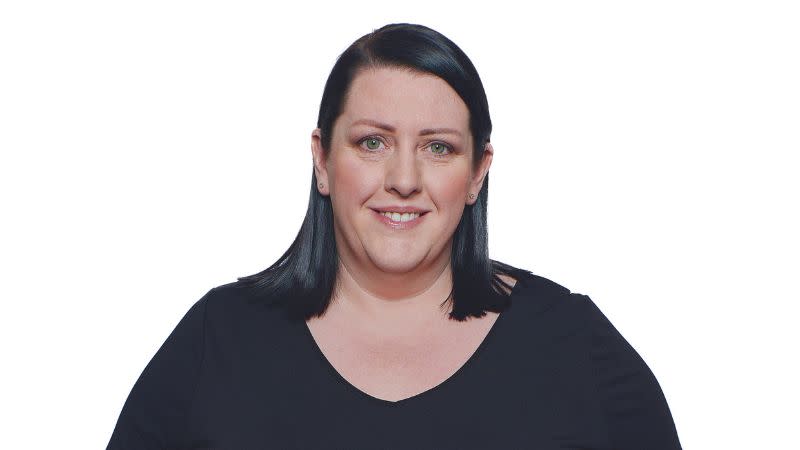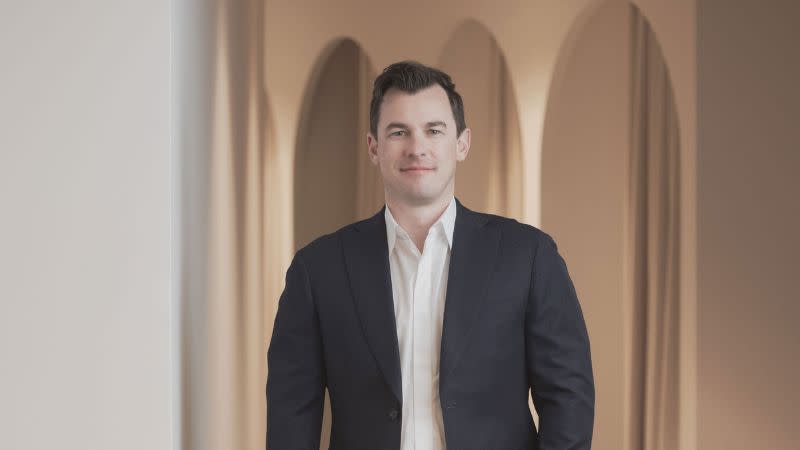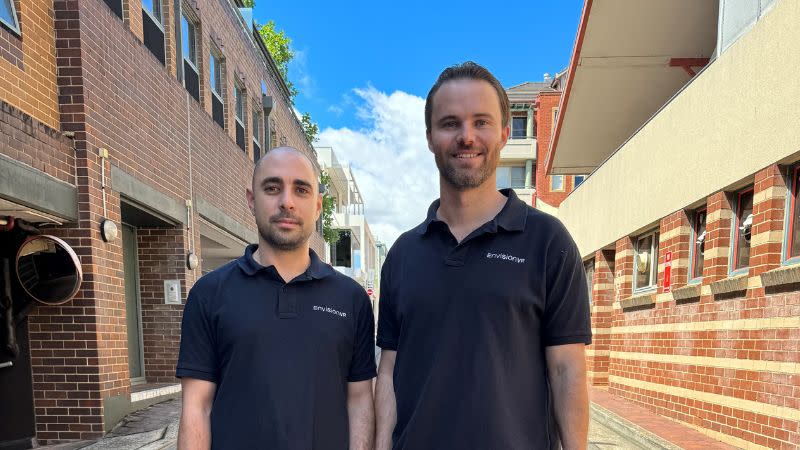
Feasibility and affordability are the key issues for 2024, according to our commentators.
Interest rates and cost of living, along with the limited delivery of affordable housing are also major topics likely to impact next year, but there is contention over the future of build-to-sell versus build-to-rent, and opinions remain divided on which housing solution will gain or grow traction in 2024.
Here’s what they said.
Terry Rawnsley
Planning and infrastructure economics director
KPMG

“Big cost price increases are come to an end, and developers going forward have more certainty regarding input and sale prices, so with a bit more positive outcomes on the building approvals front, supply should be heading in the right direction.
“But the housing market is still experiencing a challenge providing affordable housing.
“You still have governments of all ilks to incentivise affordable housing product, and people will be working out how to deliver 25 per cent or more affordable housing and also maximise commercial outcomes.”
Matthew Royal
Co-founder and director
Development Finance Partners

“A persistent issue is the high risk of builder insolvency, which elevates lending safety risks. This uncertainty poses a serious concern for financiers in the industry.
“The rising cost of capital is another critical challenge. This increase not only heightens lending risks but also depreciates security values and compromises project feasibility.
“The construction sector is also facing capacity limitations, leading to inflated costs, reduced security values of development sites, and increased risks in the transition of land bank loans to construction loans.
“There's a noticeable dip in consumer confidence within the construction sector. This decline makes obtaining pre-sales more arduous, impacting project funding and security.
“The doubling of vacancy fees for foreign-owned dwellings may deter offshore buyers from engaging in pre-sale contracts, potentially affecting the market dynamics.”
James Pearce
Principal
Fender Katsalidis

“It’s been interesting times, fuelled by mixed signals in the residential market. While there is a high demand for dwellings—and this is reflected in high rents and low vacancies—there’s a discrepancy, as this demand hasn’t translated into demand for purchasing apartments.
“Embracing and working with uncertainty has been an area of significant learning for us this year. Among our clients, we’ve observed a heightened interest in exploring the government's initiatives. Consequently, certain projects that were previously on hold have been reactivated, as stakeholders are now seeking to leverage these initiatives.
“The build-to-sell development market is beginning to bounce back too in the last few months. While the focus earlier this year was on build-to-rent, we are now seeing our build-to-sell clients looking ahead to the market’s return and making some early moves to get projects ready.”
Michelle Ciesielski
Residential Research in Australia head
Knight Frank

Knight Frank’s Global Prime Residential Forecast predicted that Sydney will grow 5 per cent in prime property prices over 2024, the highest in Australia and fifth out of 25 cities globally.
“Melbourne came in at number 8 for forecast growth in prime residential property prices over 2024 in the forecast report, with an expected rise of 3 per cent, and Perth and the Gold Coast are each forecast to have 4 per cent growth in luxury residential prices over 2024, while Brisbane is forecast to have 3 per cent growth
“In Australia, buyer appetite is strengthening, while supply of prime properties is constrained,” Michelle Ciesielski said.
“[The] undersupply of luxury homes is one of the key factors set to shape the performance of the Australian prime residential market in 2024, with inflation and interest rates also set to play a big role.
“In saying that, in this upper echelon of the market, we are seeing an increasing number of cash buyers, with the proportion being 60 per cent of all prime residential property sales in Sydney and 65 per cent in Melbourne.”
Marco Gattino
Managing director
Goldfields

“The biggest challenge facing the industry next year will be adjusting strategy to match an increasingly divergent national property market.
“Australia’s big three markets (Melbourne, Sydney, and Brisbane) are fracturing as they deal with a variety of complex challenges.
“We are firm believers in build-to-rent as an attractive investment and meaningful solution to Australia’s housing shortage. We also see a steady recovery of historic sales rates and price growth within the masterplanned community sector.
“Goldfields will be pursuing a build-to-rent strategy in the year ahead to help ease Australia’s housing shortage and meet our strategic investment goals.”
Scott Ponton
Managing director
Arklife

“Following record levels of construction cost escalation—mostly due to broad based capacity constraints—our biggest challenge in 2024 is weighing up the competing needs and priorities of infrastructure, social infrastructure and affordable housing and how we are going to solve for the capacity constraints that clearly exist in today’s market, to build and deliver what is needed at a cost, and within a timeframe that makes sense.
“We suspect 2024 may be similar to 2023 in so far as getting new projects off the ground will continue to be a challenge. This will result in potential countercyclical opportunities that will require investment decision making based on medium to long term thinking to ultimately capitalise on the opportunity.
“We are starting to gear up to complete our Arklife Cordelia project in South Brisbane towards the end of next year and potentially commence construction of two new projects. We see the successful completion of Cordelia and starting the marketing for lease of that project together with the potential of commencing two new projects of scale being a wonderful opportunity for us and one we are all looking forward to.”
Richard Temlett
National executive director
Charter Keck Cramer

“We are living through one of the most challenging, uncertain and fast-moving periods since the GFC. Whilst the health impacts of Covid have stablised and appear to be broadly understood, the domino effects of extra-ordinary fiscal and monetary stimulus, the lockdowns, rising construction costs, substantial population growth and rapid interest rate rises are still reverberating through all real estate property markets.
“A key challenge for the residential markets will be how all industry participants deal with and ultimately accept the increased pricing structure of new dwellings, particularly apartments.
“To overcome this challenge, developers and financiers must make well-researched investment and development decisions and target A-grade locations (and sites) and deliver A-grade projects.
“The Federal and state governments have all started to more fully acknowledge that facilitating the supply of new dwellings is essential to assist with the housing and rental crisis across Australia.
“The various housing statements are a good start however they need to be followed up with more detailed strategies to facilitate with the feasible delivery of a what needs to be a record volume of new dwellings.”
James Bovell
Manager, Victoria
Cedar Woods Properties

“At Cedar Woods, we’re preparing for a busy year ahead as the demand for housing is anticipated to increase due to continued strong migration combined with supply constraints.
“As affordability continues to be an increasing concern for many households, delivering innovative design solutions across land, townhouses and apartments will become more important than ever, with the adoption of efficient design and construction practices having the potential to make a transformative impact on the future of housing in Australia.
“The biggest opportunity for Cedar Woods in the upcoming year will be meeting the strong demand for high-quality, affordable residences across all typologies that benefit from a range of amenities—something that we are well positioned for, given our focus on infill transit orientated developments and greenfield communities.”
Sumedh Kataria
Director
Plus Architecture

“The biggest challenge for the industry in the year ahead is solving the housing shortage and navigating the political landscape to make this happen.
“Local and federal governments must deliver on their pro-development statements and commit to realising practical solutions. This means cutting down assessment and approval times for development applications, addressing supply chain issues, and supporting trades training to meet the construction industry’s demands.
“The industry must shift away from the short-term, quick-profit, build-to-sell model. Greater consideration must be given to growing the alternative housing market and investment models, such as the build-to-rent and affordable housing.
“Above all, people must be put at the heart of all future developments. Lidcombe Rise in Western Sydney is an example of where this new community-focused, collaborative approach is already thriving. State government, local council, private enterprise and a social housing provider have come together to create a highly successful mixed tenanted development with 41 per cent social and affordable housing.”
Sarah Buckeridge
Co-managing principal
Hayball

“In 2023, we have realised the power of designing within a social value framework. Through our housing projects, we've responded to important shifts in higher density living and an increasing focus on wellbeing, access to natural elements and creating opportunities for social connection.
“Looking ahead to 2024, we’re excited by the opportunity to implement projects at scale which can also deliver long-lasting social value. It's about understanding the diverse needs of residents, prioritising their qualitative experiences, and designing spaces that genuinely enhance their lives.
“As we transition to 2024, we will progress our research focus, working with our clients and project partners, to measure social value across sectors, and incorporating the invaluable feedback of residents and end users into our design process. This isn't just about creating buildings; it's about crafting environments that contribute meaningfully to social, environmental and economic outcomes of the communities we serve.”
Nathan Chivas
Managing director
Central Element

“Next year will bring with it great opportunity for our industry, as we are seeing the long-awaited changes to planning laws being proposed by the State Government to help increase the supply of housing for early in the new year.
“It is now up to us as an industry to work with the authorities to help accelerate and implement the necessary changes to resolve the current housing supply issues. What these complex planning pathways have taught us is that creative strategic thinking is needed to unlock the value of sites and drive positive outcomes.
“With five DA approvals across our portfolio [Hyde Park, Pienza Neutral Bay, Bianca Drummoyne, Ballamac House Coogee and The Minerva Potts Point] this year, 2024 is looking strong with construction either continuing or commencing across seven of our eight projects.At CE, we will continue to utilise our strong relationships and these planning changes to align with our very selective acquisition strategy when securing our pipeline for 2024 and beyond.”
EnvisionVR
Co-founders
Michael Shaw and David Esber

“The environment is changing faster than ever—we need to move quickly or get caught out.
“There have been so many projects with sales go bust, so creating trust with your buyer that the project is well resolved and construction is imminent is going to be so important.
“Some will look to fast-track construction, others will turn to immersive technology to give the buyers something tangible that feels real and imminent.
“The growing cost of living in Sydney makes it harder to attract remote talent for Sydney based positions so maintaining company culture as we become more decentralised is a challenge but ever more necessary.”
Scott Jessop
Head of sales and marketing
Sunkin Property Group

“[Our] biggest learning from 2023 was how much demand there still is out there for well-priced, mid-range, good value product particularly in the suburbs. Traditionally, the suburban projects are smaller in scale and smaller in sales volumes but there is a real desire for them now if they are well located and near transport, entertainment, and shopping centres.
“I also think we’ll start to see some developers looking away from build-to-rent next year and start planning for the opportunities again with build-to-sell strategies, especially if we can start to see a bit of an uptick happening with apartment values.
“It also looks like some build-to-rent projects have started reducing asking rents now and once we get to 10-20 new build-to-rent projects coming online in Metro Melbourne I think we may start to see some struggles getting their building occupancies above 50 per cent without significant rental price reductions.
“We should also be exploring as many new ways to buy property, such as companies like Co-posit or alike. Victorians needs to embrace different ways of thinking about how to buy property, and more needs to be done here in Victoria to assist and support those opportunities. Whilst, of course we need a higher level of assistance for First Home Buyers as well, there are still so many other sectors of the market that would be able to benefit from hybrid purchasing structures.”
Ozzie Kheir
Director
Resimax Group

“Access to competitive debt structure will be one of the biggest challenges in 2024 for residential property developers. Funders will require presales and debt coverage. They will also measure the risk of projects higher than they have in the past and price that risk accordingly. To overcome these challenges, developers will need to have a very detailed business plan to ensure comfort for lenders and prove that they have the experience and capital to deliver to completion.
“Funding liquidity can dry up very quickly and navigating through this is extremely important for businesses that rely on this service, such as property developers. I believe in 2024 this will become easier as confidence returns to the market, which I expect will happen mid-year.
“The biggest opportunity in 2024 is going to be for those who have done the hard yards for the last 24 months, either holding or securing land – especially in projects that are nearly ready to go.”
Alistair Taylor
Director
Prime Edition

“The property and construction industry is constantly evolving, and one of the key learnings is the increasing importance of sustainability, technology integration, and adaptability.
“Developers and builders are focusing on eco-friendly practices, leveraging technology for improved efficiency, and creating flexible spaces that can adapt to changing needs. These learnings aim to address environmental concerns, enhance productivity, and ensure resilience in the face of challenges.
“The biggest challenge will be the construction price uncertainty for our development projects. However, we are focusing on premium high-end and quality projects that are less impacted by price escalation.”
Paul Thomas
Chief executive officer
Latitude 37

“It is possible to continue delivering great homes despite the headwinds if you plan well, remain organised and run at the challenges. Over the last few years, it has thrilled me that our people have been flexible and have adapted to what has been needed to remain successful and thrive.
“Uncertainty around interest rate rises and cost of living will no doubt linger into the early part of 2024 our focus will always remain on the things that we can control and ensuring the excellent execution of our projects.
“We are seeing many great project opportunities out there for the year ahead – regardless of the challenges that have been widely documented across the construction industry. Latitude 37 will continue to do things as we always have.”